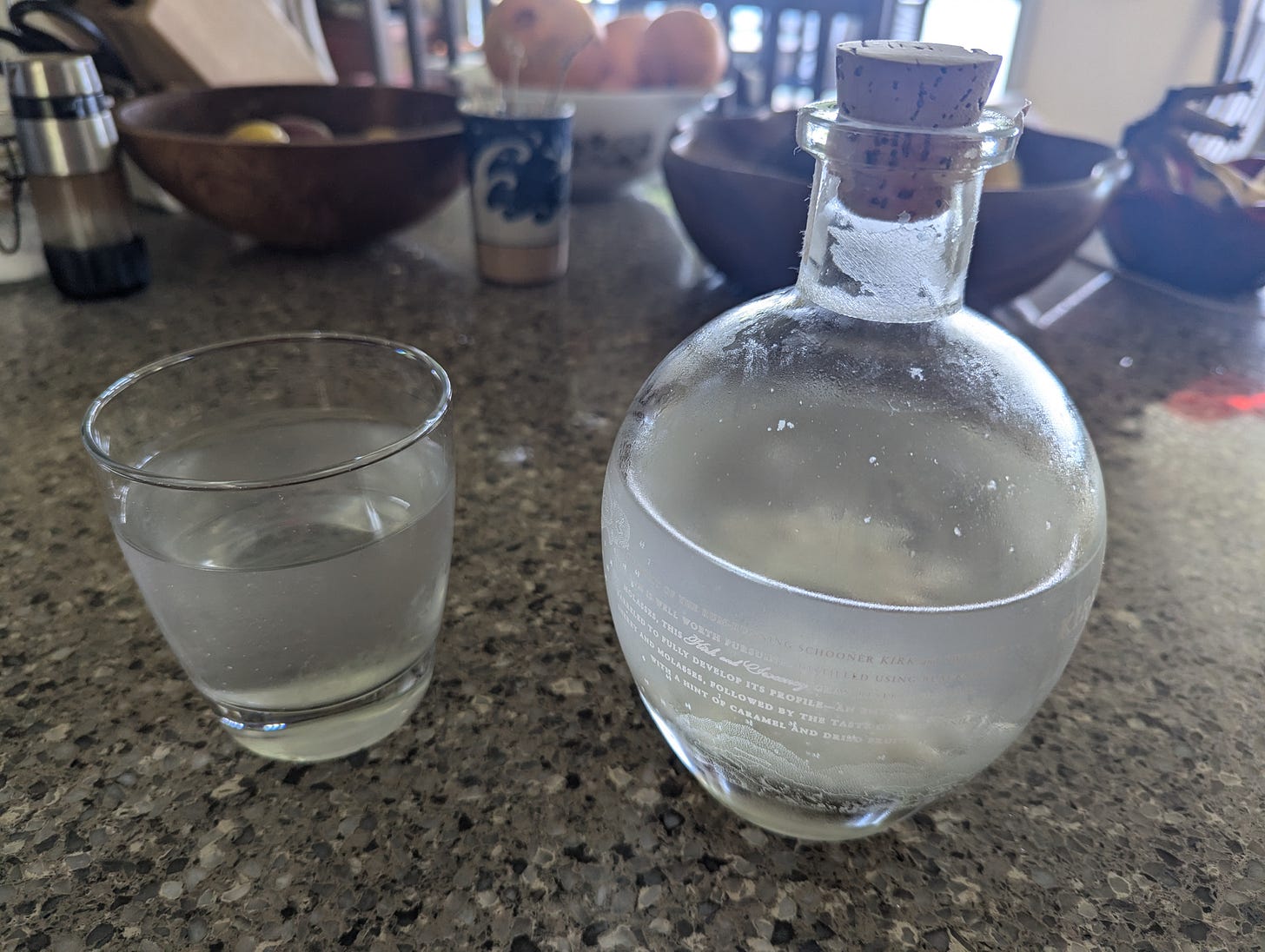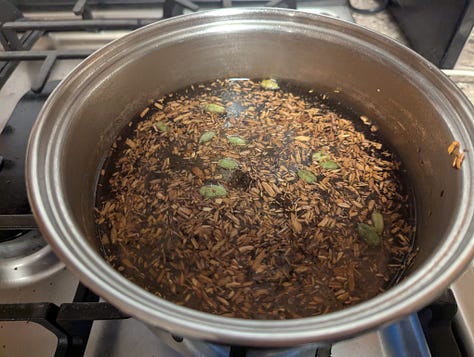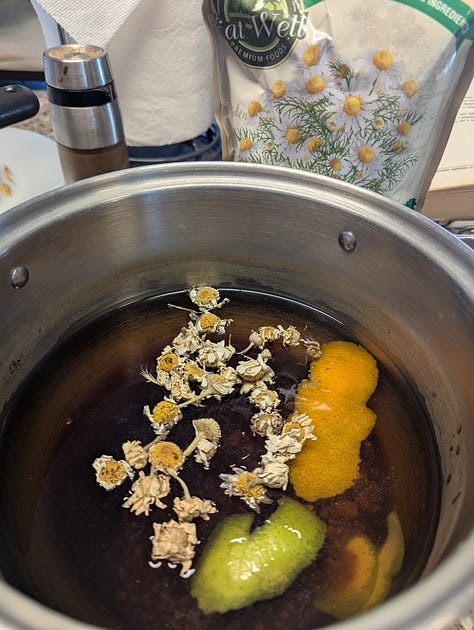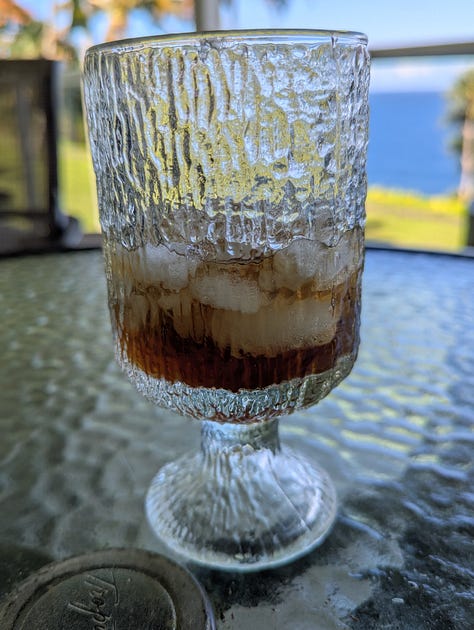What do you do when you’re an incense obsessive, but your lungs can’t handle burning incense? After struggling with bronchitis over the holidays as well as vog-induced allergies by Kilauea’s recent eruptions, I’ve had a very difficult time enjoying even the smallest joss stick. Even half a stick will cause my lungs to inflame, spasm, and give me heartburn for a day. I can’t even enjoy warmed incenses at times, as my nose has been so stopped up from Big Island’s all natural air pollution that I can’t smell much anyway.
I found my answer just down the road in Honomu. There’s a great little junk store in Honomu called Glass from the Past that has been run by the same guy since the 80s. Josh and I have found all kinds of unique finds in this store, from a Japanese shell collection, plates that match my Grandma’s dining set that she bought way back in the 60s, and vintage aloha shirts. During one recent browsing trip through the store, I happened upon a yellowed, well-loved copy of Yamuna Devi’s The Art of Indian Vegetarian Cooking. I love Indian dal dishes, so I immediately snapped it up, as it had a full chapter devoted to nothing but different dals.
As I was flipping through the book, my eye caught a recipe for Perfumed Sandalwood Crush. The lightbulbs went off: if I can’t inhale incense, then maybe I can drink it instead! This lead to a search for any and all ways that incense ingredients (namely woods and resins, since spices and herbs are already common culinary tools) can be used in food and drink.
I didn’t have to go far to get my first taste. My brother-in-law and his family send us a holiday gift box of international goodies every year, and this year’s box included some Gicopa Sapin, a pine candy from Belgium. While the rest of my family was turned off, saying it tasted too Pine Sol for their taste, I freaking loved it. I basically want my mouth and nose to feel like they’re in a forest at all times, so this stuff did the trick.
Searching for similar resinous foods took me down a deep rabbit hole into Greece, which has used mastic resin in a number of recipes, including bread, coffee, liqueur, and much more besides. I plan to do some more baking and researching in this vein over time, but for the short term, I wanted to see if I could successfully include mastic in hot chocolate. Using the ratios for one serving of Greek/ Turkish coffee, I measured out a few grains of mastic resin, ground them up with cane sugar, and blitzed them with honey, hot water, and cacao paste in the blender. The result was…meh. I liked the bright citrus and pine notes of the mastic with the bitter chocolate, but the mouthfeel of the resin with the fatty chocolate wasn’t pleasant. It coated my tongue and teeth with a slimy varnish-like feel, as if I had mixed soap in with the cacao.

I found more success with frankincense. Frankincense tea is the easiest of the incense-as-drink recipes I’ve found so far. All I had to do was soak a teaspoon of crushed Omani frankincense in 4 cups of water overnight. The resulting milky-colored liquid was replete not only with the complex citrusy perfume of frankincense, but myriad health benefits (if the literature is to be believed). I only ever had a small glass at a time, as the stuff was so strong that one teaspoon of resin could be used for two batches of four cups each. I stored the tea in a heavy bottle that once held a fancy sipping rum, so pouring a tot of this stout stuff into an Old Fashioned glass felt just as satisfying as pouring a glass of real booze. It was the perfect Dry January post-work sip.



After waiting weeks for chamomile, jaggery, sandalwood and cardamom pods to arrive in the mail, I was finally able to try out Yamuna Devi’s Perfumed Sandalwood Crush today. Here’s the recipe:
Perfumed Sandalwood Crush/ Vrindavan Goswami Sharbat
12 green cardamom pods
3 quarter-sized slices of pure sandalwood (I used 3 tablespoons of shredded sandalwood chips)
6 cups water
2 1/2 x 1 inch strip of orange zest
1 1/2 x 1 inch strip of lime zest
2/3-3/4 cup jaggery (a rough Indian cane sugar, could be substituted with brown sugar or Sugar in the Raw)
3 tablespoons dried chamomile flowers
Combine the cardamom pods, sandalwood, and water in a saucepan and bring to a boil. Reduce the heat to as low as possible, cover, and steep without simmering for 25 minutes. Remove pan from heat, cover with a tea towel, and set aside to cool and infuse for 6-8 hours or overnight. Strain into a clean pan. Bring to a near boil, turn off the heat, and add the remaining ingredients. Cover and steep for 5 minutes. Strain and cool to room temperature. Chill well. Serve in goblets over crushed ice.
I had trouble keeping things from boiling. Even my oven’s simmer burner will keep things boiling at its lowest level, so this mixture boiled a couple of times. (I am also lazy and didn’t feel like watching a pot.) While it made my kitchen smell amazing, boiling may have affected the delicate sandalwood oils. While the result was delicious, complex, and very refreshing, it was much more redolent of cardamom than sandalwood. (Not a bad thing, as I adore cardamom.) It was also a bit too sweet for my taste despite my going with the lower amount of suggested sugar. Next time, I will try to watch the pot more closely and may use only 6 cardamom pods and 1/3rd cup of jaggery in the hopes of bringing out more of the sandalwood flavor. Even so, I liked the recipe as is even with my missteps. This is a wonderful drink to savor on a hot summer afternoon or after a spicy Indian meal.
Josh got a nitrous gas infuser for Christmas, so while we sampled the sandalwood crush, he put a 1/4 cup of sandalwood chips into the infuser with some vodka just to see what would happen. The infusion was the opposite of my subtle sandalwood crush: EXTREMELY strong, with a soapy taste that would be hard to take unless heavily diluted. We threw some citrus zests and a couple cardamom pods into the infusion, so we’ll see what comes of it sitting and stewing for a day. Maybe a drop of that will zing up the sandalwood crush, or it may be an interesting bitters to add to cocktails and other drinks.
While I am sad that my lungs are healing more slowly than I would like, experimenting with other ways of enjoying incense has opened new possibilities. It will be fun to perfect the sandalwood punch of my imagination. Please let me know if you’ve experimented with eating or drinking things flavored with tree resins or wood—I would love to hear about your experience!




